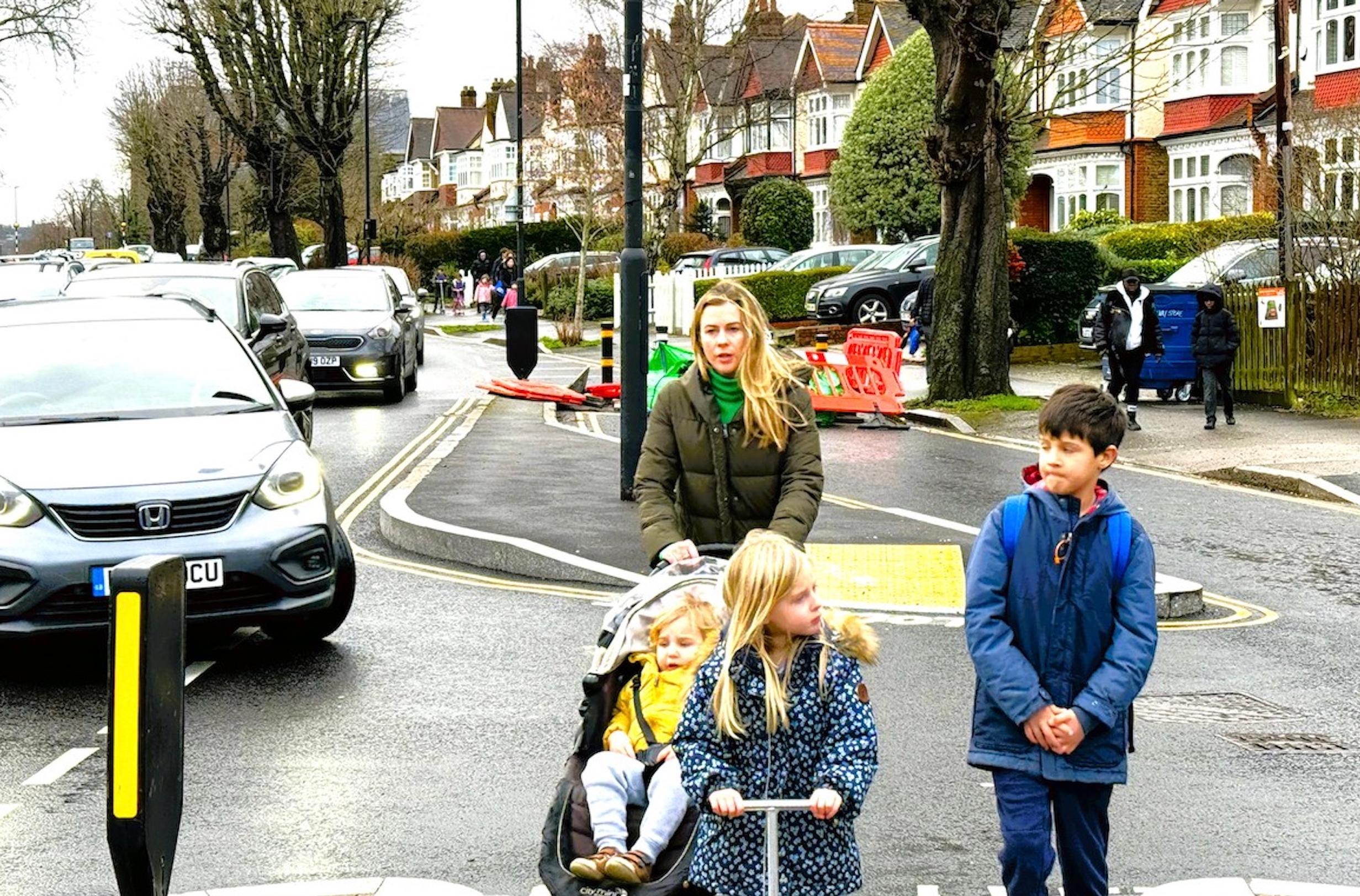

According to new research, a quarter of pupils in London are driven to primary school every weekday, generating an extra 240,000 car trips during each of the morning and afternoon rush hours.
The findings are part of new analysis on transport for schools conducted by campaign group Solve the School Run.
“Researching the situation, we were amazed at the systemic problems surrounding the school run for UK families,” it said. “From road danger, preventing pupils from travelling independently, to a shortfall of government infrastructure and information in place that enables collective pupil travel to help working families.”
Solve the School Run is calling for more cargo-bike friendly measures to be introduced as well as a fleet of US-style school buses.
The group was surprised to discover that problems around the school run are as bad in inner London as in outer London, with 25% of children being driven to primary school in inner London boroughs, compared with 24% in outer London boroughs. Modelling carried out by the group found that the distances that pupils are travelling to primary schools in inner and outer London, is almost the same, despite large differences in housing density.
Kensington and Chelsea has one of the highest modelled rates of primary-aged pupils being driven to school in London, with 36% being taken in a car to drop off and pick up. “This is largely because pupils in the borough tend to travel longer distances to school and attend ‘non-catchment’ primary schools which can select from pupils beyond their local area,” Sadio the group.
By comparison, 18% of primary pupils in Waltham Forest are driven to school, reflecting the fact that more than eight in ten pupils (82%) go to a school which is less than a mile to travel to from where they live, Solve the School Run found.
Camden also has one of the highest modelled driving rates, with 29% of primary pupils being driven to school. “This is primarily because Camden has a high proportion of ‘non-catchment’ primary schools where pupils are selected from beyond their local area and have longer and more time-consuming school run journeys.”
Co-founder of Solve the School Run Nicola Pastore said: “Every morning and afternoon I run the gauntlet of double-parked cars, congestion on crossings, idling and road rage, to walk my three young children to school. It’s the most dangerous part of our day.
“With so many families travelling more than a mile to school, they need more help to get to school in a way that is healthy, less stressful and doesn’t damage our local environment. That could include electric cargo bikes or staffed walking buses and cycle groups. Imagine if our big cities had yellow buses, like in the US, which remove the need for every parent to go on the journey every day. We need change.”
The group is calling for more publicly funded support for the school run, which could include funded and staffed walking groups or cycling groups, or funded school buses, which are more commonly used in the United States, Germany, Spain and Norway.
In England, children only get funding for school transport if they are under eight and the school is more than two miles away, or if they are eith or over and the school is more than three miles away, according to Solve the School Run.
“However, in the US yellow school buses are available for anyone that lives more than one mile from their school. In some major cities such as New York, support is available if you live just half a mile away from school.
“In the USA, over half of children go to school on a school bus, compared with just 6% of pupils in the UK. In the US free bussing is, with a few exceptions, available to all pupils who live over one mile from school.”
Other potential options that the government should consider supporting include: Official ‘Walking buses’ or ‘Bike buses’, with staffed marshals walking or cycling pupils from ‘stops’ to school; and subsidised electric cargo bikes, so parents can take their children longer distances and beat the traffic.
TransportXtra is part of Landor LINKS
© 2024 TransportXtra | Landor LINKS Ltd | All Rights Reserved
Subscriptions, Magazines & Online Access Enquires
[Frequently Asked Questions]
Email: subs.ltt@landor.co.uk | Tel: +44 (0) 20 7091 7959
Shop & Accounts Enquires
Email: accounts@landor.co.uk | Tel: +44 (0) 20 7091 7855
Advertising Sales & Recruitment Enquires
Email: daniel@landor.co.uk | Tel: +44 (0) 20 7091 7861
Events & Conference Enquires
Email: conferences@landor.co.uk | Tel: +44 (0) 20 7091 7865
Press Releases & Editorial Enquires
Email: info@transportxtra.com | Tel: +44 (0) 20 7091 7875
Privacy Policy | Terms and Conditions | Advertise
Web design london by Brainiac Media 2020